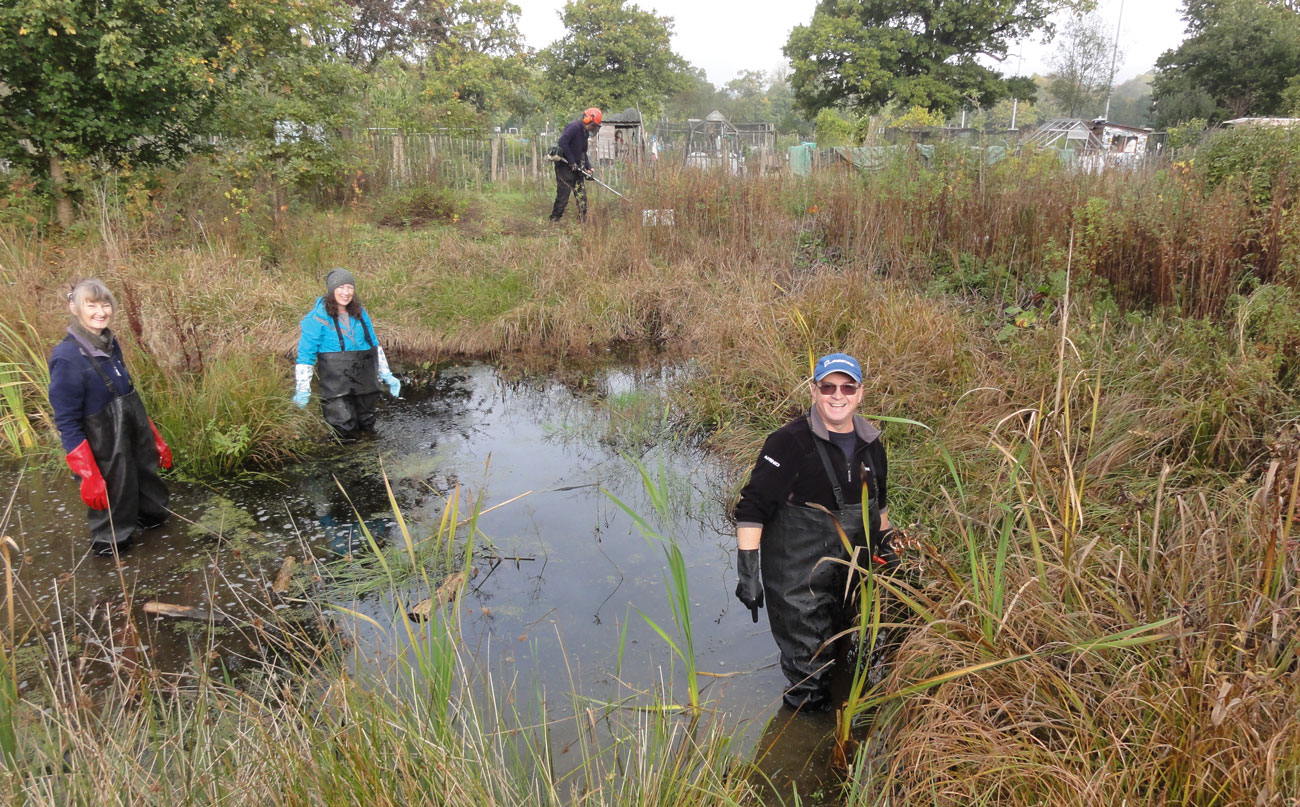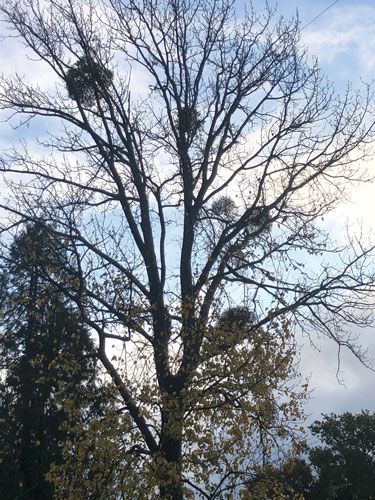
Volunteers working on Beryl Harvey pond.
Humans have always imbued the world around them with meaning. The natural world is not just itself, but becomes a symbol or allegory. According to Wordsworth, oaks represent endurance and dignity. White lilies in Christian art signal purity. Bees and ants are models of a well-organised society.
‘Decking the halls’ at Christmas with evergreen holly, ivy and mistletoe was an affirmation of life continuing, even when in the depths of winter, the world looked lifeless, and who knew if spring would come?
Mistletoe has been the subject of many beliefs for thousands of years. Its strange habit of apparently appearing out of nowhere suggested magic re-generative powers. Pliny the Elder, in his rather unreliable book Natural History, written 1,900 years ago told of the Druids cutting mistletoe with golden sickles and this was somehow tied up with encouraging fertility and the return of life in spring. These beliefs changed over time – and a residue remains with us in the tradition of kissing under a sprig of mistletoe at Christmas.

Mistletoe is a semi-parasite, sinking specialised roots into its host tree and drawing some nourishment, supplemented by its own chlorophyll. It particularly likes crab apple, hawthorn, poplar, and lime. It is spread by birds, which eat the sticky white berries and then clean their beaks on the bark, embedding the seeds.
Avenue Road in Cranleigh was once lined with poplars – and there is one tall balsam poplar remaining. I became aware of it in April when I smelt that delicious scent of the sticky buds. Now that the leaves have dropped, the large clusters of mistletoe are visible. A perilous climb for any would-be Druid.
I have been asked about the dating of trees using the dimension of the trunk. This method was developed by Alan Mitchell (1922-1995) a dendrologist, forester and botanist who drew up the Tree Register of the British Isles (TROBI) and it is claimed he single-handedly measured and recorded 100,000 trees.

Using the Mitchell method, my friend Kitty and I measured an oak in the area which is to be Knowle Country Park. It is the largest oak we have found so far; about 254 years old. It is good to know that it is covered by a TPO. I would be very interested to hear is anyone finds and measures an older oak. Reminder: the measurement is taken 5ft up the trunk and each inch represents a year in the life of the tree.
Conservationists agree that a pond greatly increases diversity and richness of habitat. The pond at Beryl Harvey Fields was dug sometime in the 1980s. It is full of life; reptiles, amphibians and a faithful moorhen. The vigorous vegetation growing round the edges needs cutting back regularly, so as not to encroach. We met recently to clear the grass and edges – hard work, but very satisfying. Except for anyone who slips and their waders fill with chilly water. It has happened to me in the past, and to Mark – seen here smiling in the photo on the left – just before the mishap!
Have a safe and Happy Christmas – and include, if you can, a walk round Beryl Harvey Fields.
We have regular maintenance days at Cranleigh’s Conservation Site at Beryl Harvey Fields. We would welcome more volunteers. Contact Philip Townsend at: townsendp99@gmail.com for details.











